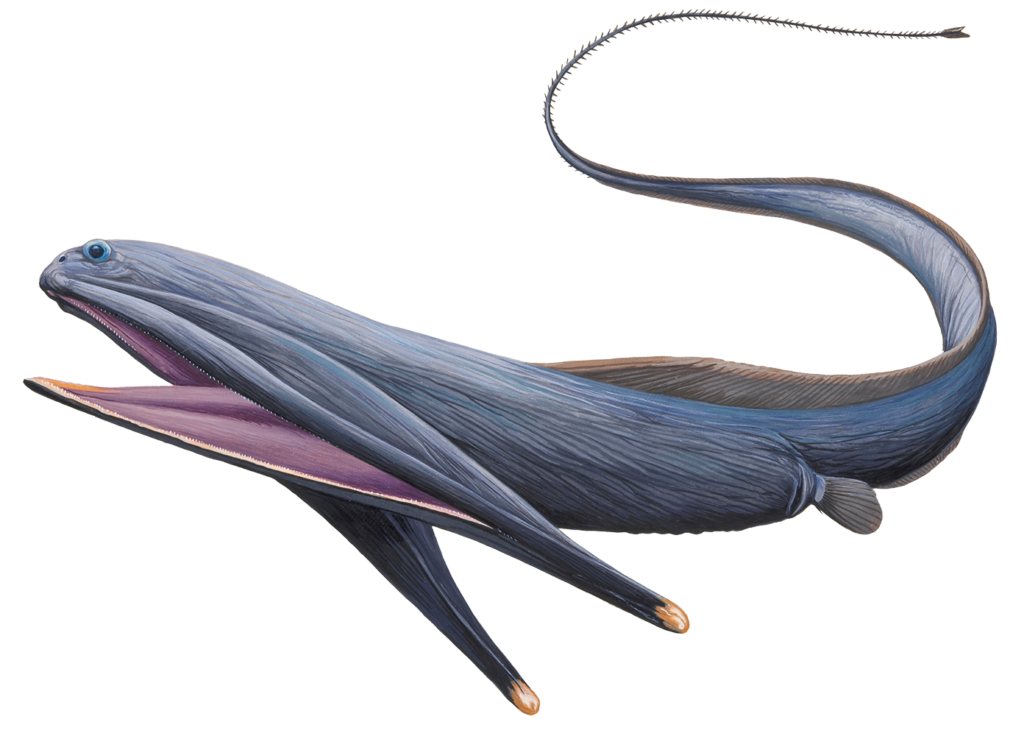NATURE’S WEIRDEST CREATURES…
The pelican eel

In 2018, researchers controlling a remotely operated vehicle in Hawaiian waters stumbled across the best view to date of this deep-sea oddity. Spotted a mile down in the Papahānaumokuākea Marine National Monument, the critter looked like a sinister sperm, with its black, bulbous head and a lithe, whip-like tail. Without warning, its head then began to inflate and wobble, before morphing into a gaping pair of jaws, and then into a more streamlined form, before it disappeared into the darkness.
Until that moment, much of our knowledge of the pelican eel came from the mashed-up remains of individuals that had been roughly hauled up from the abyss. It’s called the pelican eel because of its enormous mouth, which can expand to hold large volumes of water and prey, a bit like a pelican. Excess water is jettisoned via paired gill slits, while the food – small crustaceans and invertebrates – moves into the stomach, which expands to accommodate it.
The pelican eel has small eyes, tiny teeth and a loosely hinged jaw that’s a quarter of the length of its body. Adults are around 75cm long, with a bioluminescent tip on their tails that pulses red, presumably to attract prey. They have been found in the temperate and tropical areas of all oceans, where they add a ghoulish, Tim Burton-esque flair. HP
Email your questions to
questions@sciencefocus.com
or submit on Twitter
@sciencefocus